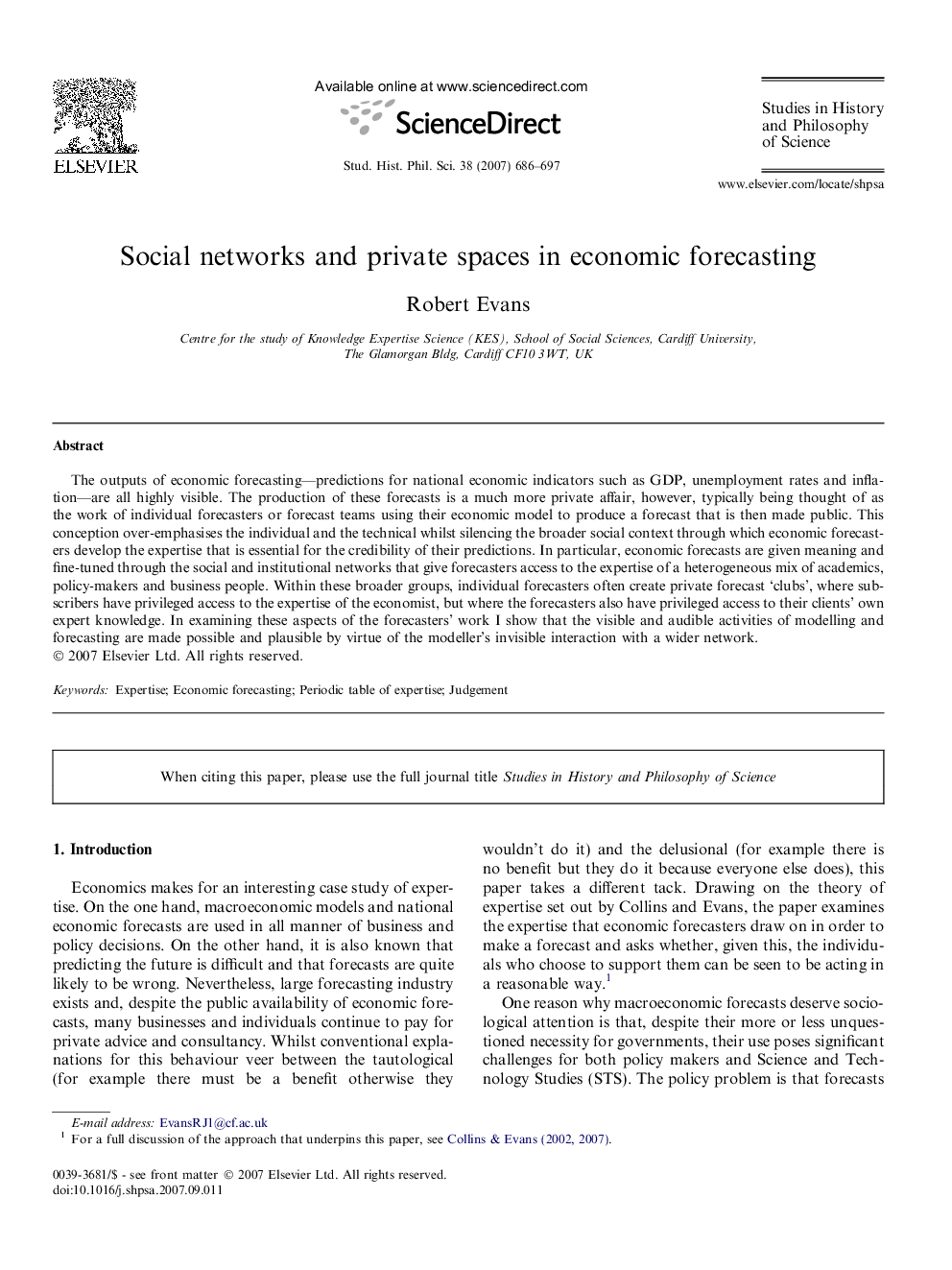| Article ID | Journal | Published Year | Pages | File Type |
|---|---|---|---|---|
| 1160967 | Studies in History and Philosophy of Science Part A | 2007 | 12 Pages |
The outputs of economic forecasting—predictions for national economic indicators such as GDP, unemployment rates and inflation—are all highly visible. The production of these forecasts is a much more private affair, however, typically being thought of as the work of individual forecasters or forecast teams using their economic model to produce a forecast that is then made public. This conception over-emphasises the individual and the technical whilst silencing the broader social context through which economic forecasters develop the expertise that is essential for the credibility of their predictions. In particular, economic forecasts are given meaning and fine-tuned through the social and institutional networks that give forecasters access to the expertise of a heterogeneous mix of academics, policy-makers and business people. Within these broader groups, individual forecasters often create private forecast ‘clubs’, where subscribers have privileged access to the expertise of the economist, but where the forecasters also have privileged access to their clients’ own expert knowledge. In examining these aspects of the forecasters’ work I show that the visible and audible activities of modelling and forecasting are made possible and plausible by virtue of the modeller’s invisible interaction with a wider network.
